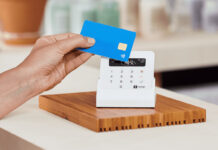

THERE’S more to microwaves than simply reheating and defrosting.
Catering equipment suppliers told SLTN last week that technological developments mean the microwave can now perform a broader range of functions, from roasting and steaming to grilling and baking.
It’s also reckoned to be a more energy-efficient way to cook, as the microwave is only in operation when the food is inside the oven.
But how do caterers know which type of microwave is best suited to their operation?
As with buying most kitchen equipment, there are a number of factors to consider.
Firstly, operators should decide if they need a straight commercial microwave or a combination microwave.
For straightforward reheating and defrosting, long-established supplier RH Hall says a straight commercial microwave will suffice.
However, for chefs seeking to cook foods it’s better to invest in a microwave convection oven. Such equipment gives foods like pastry a crisp golden-brown result that conventional ovens provide, only in ‘microwave time’.
“It is likely that most caterers have a need for reheat, defrost and cooking tasks and, in this case, it is recommended that both a combination microwave oven and a microwave oven are both purchased,” said a spokesman for RH Hall.
“A combination microwave oven will not replace the need for a microwave oven and vice-versa.
“These two types of oven work extremely well in tandem together. For example, whilst reheating or cooking pastry products using the combination model, the ordinary microwave is available for all your straightforward reheat and defrost requirements.”
Choosing the right size and power of microwave is another key consideration.
If the power’s too low, delays in cooking and heating food are likely; but too high and it can be difficult to judge the timing of small portions.
“In commercial kitchens it is important to use microwave ovens expressly designed for that environment,” said a spokeswoman for the Catering Equipment Suppliers’ Association. “The power outputs on domestic microwaves can drop with over-use and food may not reach safe cooking temperatures, compromising food safety.”
Aside from the spec of a microwave, price remains a key consideration, said Chris Drury, of catering equipment supplier Valera.
“The reality is that over the last few years a lot of the cost has been engineered out of microwaves to the point where there isn’t really anywhere else to go,” he said.
“And with the cost of labour and raw materials set to rise, there is really only one way for machines to go. On a positive note, the reliability level of microwaves in general has increased significantly over the last few years thanks to the use of better components.
“From spending time ‘out in the field’ talking to operators, my view is that most just want a machine that can be plugged in to a 13amp wall socket, is easy to use and can quickly reheat single, or indeed multiple, portions of food.”
























